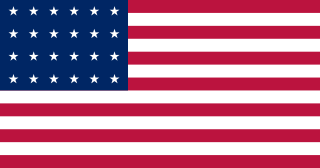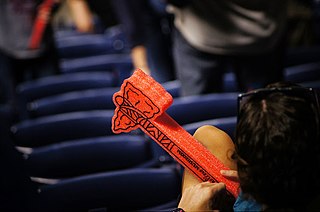Related Research Articles

The Indian Territory and the Indian Territories are terms that generally described an evolving land area set aside by the United States Government for the relocation of Native Americans who held aboriginal title to their land as a sovereign independent state. In general, the tribes ceded land they occupied in exchange for land grants in 1803. The concept of an Indian Territory was an outcome of the US federal government's 18th- and 19th-century policy of Indian removal. After the American Civil War (1861–1865), the policy of the US government was one of assimilation.

Charles Curtis was an American attorney and Republican politician from Kansas who served as the 31st vice president of the United States from 1929 to 1933. He also previously served as the Senate Majority Leader from 1924 to 1929.

The American Indian Movement (AIM) is a Native American grassroots movement founded in July 1968 in Minneapolis, Minnesota, initially centered in urban areas to address systemic issues of poverty, discrimination, and police brutality against Native Americans. AIM soon widened its focus from urban issues to include many Indigenous Tribal issues that Native American groups have faced due to settler colonialism of the Americas. These have included treaty rights, high rates of unemployment, Native American education, cultural continuity, and preservation of Indigenous cultures.

William Mervin Mills, also known as Tamakoce Te'Hila, is an Oglala Lakota former track and field athlete who won a gold medal in the 10,000 meter run (6.2 mi) at the 1964 Tokyo Olympics. His 1964 victory is considered one of the greatest Olympic upsets because he was a virtual unknown going into the event. He was the first non-European to win the Olympic event and remains the only winner from the Americas. A United States Marine, Mills is a member of the Oglala Sioux Tribe.
The Office of Economic Opportunity was the agency responsible for administering most of the War on Poverty programs created as part of United States President Lyndon B. Johnson's Great Society legislative agenda.
William Wayne "Bill" Keeler (1908–1987) is best known as the last appointed and first elected Principal Chief of the Cherokee Nation in the 20th century. Educated as a chemical engineer, he worked for Phillips Petroleum Company, where he became chief executive officer at the end of a long career with the company. He was one-sixteenth Cherokee, and throughout his life he also worked in the federal government for the advancement of Indians. President Truman appointed him as Principal Chief of the Cherokee Nation of Oklahoma in 1949. He also served as chairman for the executive committee of the Texas Cherokees and Associate Bands from 1939 until 1972. In 1971, he became the Cherokees' first elected chief since 1903.
The Trail of Broken Treaties was a 1972 cross-country caravan of American Indian and First Nations organizations that started on the West Coast of the United States and ended at the Department of Interior headquarters building at the US capital of Washington DC. Participants called for the restoration of tribes’ treaty-making authority, the abolition of the Bureau of Indian Affairs, and federal investment in jobs, housing, and education.

The Red Power movement was a social movement led by Native American youth to demand self-determination for Native Americans in the United States. Organizations that were part of Red Power Movement included American Indian Movement (AIM) and National Indian Youth Council (NIYC). This movement sought the rights for Native Americans to make policies and programs for themselves while maintaining and controlling their own land and resources. The Red Power movement took a confrontational and civil disobedience approach to inciting change in United States to Native American affairs compared to using negotiations and settlements, which national Native American groups such as National Congress of American Indians had before. Red Power centered around mass action, militant action, and unified action.

Since the 1960s, the issue of Native American and First Nations names and images being used by sports teams as mascots has been the subject of increasing public controversy in the United States and Canada. This has been a period of rising Indigenous civil rights movements, and Native Americans and their supporters object to the use of images and names in a manner and context they consider derogatory. They have conducted numerous protests and tried to educate the public on this issue.

Vernon Bellecourt (WaBun-Inini) was a member of the White Earth Band of Ojibwe, a Native American rights activist, and a leader in the American Indian Movement (AIM). In the Ojibwe language, his name meant "Man of Dawn."

The National Congress of American Indians (NCAI) is an American Indian and Alaska Native rights organization. It was founded in 1944 to represent the tribes and resist federal government pressure for termination of tribal rights and assimilation of their people. These were in contradiction of their treaty rights and status as sovereign entities. The organization continues to be an association of federally recognized and state-recognized Indian tribes.
Henry Lyle Adams was an American Native rights activist known as a successful strategist, tactician, and negotiator. He was instrumental in resolving several key conflicts between Native Americans and state and federal government officials after 1960. Born on a reservation in Montana and based in Washington state for much of his life, he participated in protests and negotiations in Washington, DC and Wounded Knee, South Dakota.
Clyde Merton Warrior (1939–1968) was a Native American activist and leader, orator and one of the founders of the National Indian Youth Council. He participated in the March on Washington and the War on Poverty in the 1960s and was a charismatic speaker on Indian self-determination.
Pan-Indianism is a philosophical and political approach promoting unity, and to some extent cultural homogenization, among different Native American, First Nations, Inuit and Métis (FNIM) groups in the Americas regardless of tribal distinctions and cultural differences.

The National Indian Youth Council (NIYC) is the second oldest American Indian organization in the United States with a membership of more than 15,000. It was the first independent native student organization, and one of the first native organizations to use direct action protests as a means to pursue its goals. During the 1960s, NIYC acted primarily as a civil rights organization. It was very active in the movement to preserve tribal fishing rights in the Northwest.

As the 1960s emerged, a growing sensitivity to minority rights was born, spurred by Supreme Court decisions such as Brown v. Board of Education, Gideon v. Wainwright, Loving v. Virginia and legislation including the Voting Rights Act of 1957, the Civil Rights Act of 1964, the Voting Rights Act of 1965 and the Fair Housing Act if 1968. Into this turbulent time, a pan-Indian movement developed predominantly with the goals of having the US government return native lands, right social ills, and provide funds for cultural education. The Red Power Movement and American Indian Movement were both born out of this pan-Indian awakening, which was, at least in the beginning, an urban phenomenon, an awareness of ones "Indian-ness" and the similarities of tribal customs. In cities, cut off from the tribe, one still experienced things that bound them to other native people because of an innate oneness of tribal behavior and kinship of tradition. After years of being told that relocation to cities would help them assimilate into the greater society, Native American experience was non-acceptance, isolation, and paternalism, which led them to each other for a sense of connection. In just such an environment, young Choctaw activists began awakening in Oklahoma City, Oklahoma.

Ruth Muskrat Bronson was a Cherokee poet, educator and Indian rights activist. After completing her education, Bronson became the first Guidance and Placement Officer of the Bureau of Indian Affairs. She served as executive secretary for the National Congress of American Indians, which was founded in 1944, and created their legislative news service.

Veronica Murdock is an American civil servant and of Shasta-Mohave ancestry, as a member of the Colorado River Indian Tribes. She served in the tribal administration, including as vice chair, of the Colorado River Tribe from 1969 to 1979 and between 1977 and 1979 as the first woman president of the National Congress of American Indians. From 1980 to 2004, she served as a civil service employee with the Bureau of Indian Affairs.
Shirley Hill Witt is an anthropologist, author, civil rights activist, and former foreign service officer. A member of the Akwesasne Mohawk Nation, Wolf Clan, Witt was one of the first Native American women to earn a Ph.D. She obtained her Ph.D. in evolutionary anthropology from the University of New Mexico in 1969. Witt has published extensively on Native Americans in addition to being a poet and fiction writer. She was a founding member of the National Indian Youth Council.
LaNada War Jack, also known as LaNada Boyer and LaNada Means, is an American writer and activist. She was the first Native American student admitted to the University of California at Berkeley in 1968. She led the drive to create the Native American Student Organization and became its chair. As a leader of the Third World Strike at UC Berkeley in 1969, she was arrested but succeeded in obtaining approval for the first ethnic studies courses to be included in the university's curricula. A few months later, she became one of the organizers of the Occupation of Alcatraz in 1969. After the occupation, she completed her bachelor's degree at the University of California, Berkeley and went on to study law at Antioch School of Law in Washington, D.C. While in Washington, she participated in the takeover of the Bureau of Indian Affairs office in 1972.
References
- 1 2 Shreve, Bradley Glenn. "Red Power Rising: The National Indian Youth Council and the Origins of Intertribal Activism." p.159 Diss. U of Mexico, 2007.
- ↑ Cobb, Daniel M.(2008). Native Activism In Cold War America: The Struggle for Sovereignty, University Press of Kansas, Kansas. ISBN 978-0-7006-1597-1.